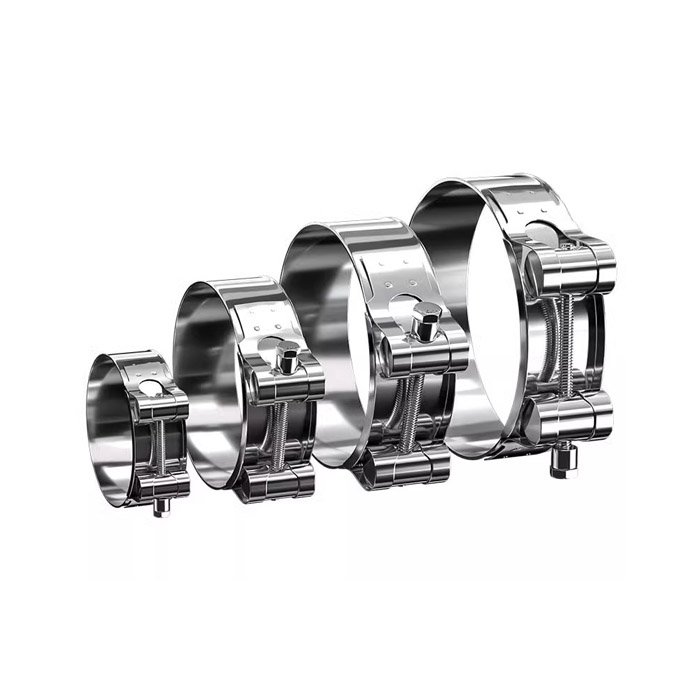- Phone:+86-17331948172 +86-0319-8862898
- E-mail: inquiry@puxingclamp.com
Dec . 25, 2024 12:51 Back to list
High Carbon Spring Steel Strip Manufacturing Facility Overview and Production Insights
High Carbon Spring Steel Strip Factory A Key Player in Modern Manufacturing
In the realm of industrial manufacturing, high carbon spring steel strips have emerged as essential components across various sectors, ranging from automotive to aerospace and beyond. These specialized materials possess superior mechanical properties that make them ideal for applications requiring durability, elasticity, and resistance to deformation. The growth of a high carbon spring steel strip factory could significantly contribute to meeting the increasing demand for these high-performance materials.
Understanding High Carbon Spring Steel
High carbon steel, defined by a carbon content typically between 0.60% and 1.00%, offers exceptional hardness and tensile strength, making it suitable for manufacturing springs and other specific components. Spring steel, specifically, is tailored to maintain its shape and resilience under stress. This unique combination of traits is crucial for applications that involve repeated loading and unloading of materials, such as in vehicles, machinery, and consumer goods.
The production of high carbon spring steel strips involves careful selection of raw materials, stringent control over the manufacturing process, and thorough quality assurance measures. Factors such as temperature control, cooling rates, and alloy composition play critical roles in determining the final product's performance characteristics.
The Manufacturing Process
The process of manufacturing high carbon spring steel strips typically includes several key steps
1. Melting and Alloying Raw materials are melted in electric arc furnaces, where precise amounts of alloying elements are added. This stage is vital to achieving the desired chemical composition.
2. Casting The molten steel is then cast into slabs or billets, which will be later processed into strips.
3. Hot Rolling Once solidified, the billets are heated and passed through rollers, shaping them into thinner strips. This step enhances the material's mechanical properties and prepares it for subsequent processes.
4. Cold Rolling Further refinement is achieved through cold rolling, where the strips are passed through rollers at room temperature. This not only reduces the thickness but also improves the surface finish and mechanical strength.
high carbon spring steel strip factory

5. Heat Treatment The rolled strips undergo heat treatment to achieve the desired hardness and elasticity. Different techniques, such as quenching and tempering, are employed to fine-tune properties.
6. Finishing Processes Finally, processes like grinding, polishing, and coating are applied to ensure the strips meet industry standards and customer specifications.
Quality Control and Innovation
Quality control is paramount in the manufacturing of high carbon spring steel strips. Factories employ rigorous testing methods to ensure the steel meets international standards such as ISO, ASTM, and SAE. Tests include tensile strength assessments, fatigue tests, and metallographic examinations.
Moreover, as industries evolve, so does the demand for innovative solutions. Research and development teams within these factories focus on enhancing the performance characteristics of high carbon springs, exploring new alloy compositions and advanced manufacturing techniques. Collaborations with academic institutions and industry partners often lead to breakthroughs that can redefine the market landscape.
Market Demand and Applications
The market for high carbon spring steel strips is vast and varied. Automotive manufacturers use these materials for leaf springs, coils, and other suspension components that require durability under stress. Similarly, in the electronics industry, high-carbon strips are integral to the production of various devices and components that necessitate reliable spring action.
With the push toward more efficient and sustainable manufacturing practices, the demand for high-quality, performance-oriented materials will only grow. Additionally, as electric vehicles (EVs) and renewable energy technologies continue to gain traction, the need for advanced spring solutions is anticipated to rise.
Conclusion
A high carbon spring steel strip factory stands at the forefront of modern manufacturing, providing essential materials that fuel innovation across multiple industries. By focusing on quality control, embracing technological advancements, and understanding market dynamics, these factories will not only thrive but also play a crucial role in shaping the future of engineering and manufacturing worldwide. As industries continue to evolve, so too will the significance of high carbon spring steel strips, positioning factories as indispensable contributors to global progress.
-
Heavy Duty Hose Clamps: Premium Stainless Steel & Adjustable
NewsAug.19,2025
-
Large Stainless Steel Adjustable American Type Hose Clamp - Hebei Pux Alloy Technology Co., Ltd
NewsAug.18,2025
-
Large Stainless Steel Adjustable Hose Clamp - Hebei Pux Alloy|Durable Corrosion Resistance&Adjustable Design
NewsAug.18,2025
-
Large Stainless Steel Adjustable Hose Clamp - Hebei Pux Alloy Technology Co., Ltd
NewsAug.18,2025
-
American Style Adjustable Hose Clamps for Pipe & Radiator
NewsAug.18,2025
-
Large Stainless Steel Adjustable American Type Hose Clamp - Hebei Pux Alloy Technology Co., Ltd.|Corrosion Resistance, Adjustable Design
NewsAug.17,2025




